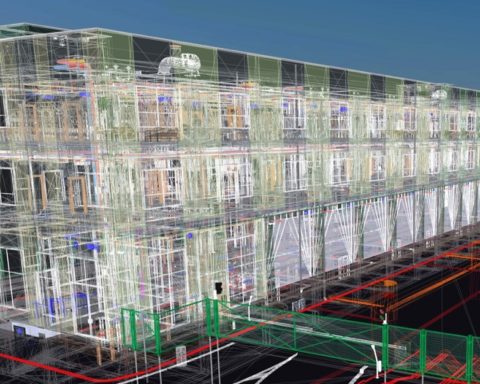Anticipating the consequences of the coming crisis, the Conservatoire national des arts et métiers (Cnam), the research department and the laboratories have set up a business continuity plan. Today, all of the teacher-researchers are actively pursuing their work, notably by developing specific research projects in connection with Covid-19. Their expertise is regularly called upon to decipher current events and fight against misinformation.
Responding to an exceptional call for projects from the French National Research Agency, ANR flash, against Covid-19, the MOD-COV research project was selected among the 86 projects that received emergency funding in view of the situation. MOD-COV aims at the mathematical modelling of the spread of infectious diseases in the medical environment. It is led by Laura Temime, director of the laboratory Modelling, epidemiology and surveillance of health security risks (MESuRS) of the Cnam and Lulla Opatowski, researcher at the laboratory Epidemiology and modelling of antimicrobial resistance U1181 (Institut Pasteur/Inserm/University of Versailles Saint-Quentin-en-Yvelines).
Adapted from models already developed by the laboratory, it will make it possible to assess the risk associated with nosocomial transmission of SARS-CoV-2 for patients and healthcare workers. The analyses of the simulations will thus support decision-making on the implementation of measures to limit the spread of the virus in healthcare institutions. In the longer term, this work will also help to better understand the epidemic characteristics of SARS-CoV-2 and provide tools and procedures that can be used in future epidemics.
Last March, the structural bioinformatics team of the laboratory Genomics, Bioinformatics and Molecular Chemistry (GBCM) of the Cnam led by Matthieu Montes, joined the international team from six renowned institutions (Sorbonne University, Conservatoire national des arts et métiers, University of Limoges, University of Texas at Austin, University of North Texas and University of Washington at Saint Louis, in collaboration with the Pasteur Institute), formed to fight the battle at Covid-19 using the CNRS Jean Zay supercomputer. The aim is to study the molecular structure of the virus as precisely as possible and find its flaws, in order to design new drugs capable of neutralizing it by preventing it from entering human cells or by blocking its internal mechanisms.
At the same time, an application for real-time monitoring of the evolution of the pandemic in the main affected countries has also been developed by the GBCM laboratory. Based on figures constantly updated by the Center for Systems Science and Engineering (Johns Hopkins University), the tool designed by Josselin Noirel, a researcher in the Genomics/Bioinformatics team, makes it possible to know, by country, the number of people who have been infected by Covid-19, those who have died and those who have recovered. All the data is accessible on GitHub.
For their part, the members of the laboratory Mechanical and materials process and engineering (Pimm) have developed a process for manufacturing protective visors for medical personnel. Initially developed using 3D printers, the manufacturing process was optimised using an injection process that required the design of a special mould. Tests are currently underway. Eventually, 500 visors will be produced per day and distributed to doctors and pharmacists as well as hospitals.
Finally, the Cnam's teacher-researchers - epidemiologists of course, but also economists, sociologists, psychologists or philosophers as well as criminologists or lawyers - regularly shed light on various subjects related to the current world health crisis, whether it be in the mediaon the CNAM blog or as part of the new series of videos At the heart of the debate initiated by the institution's mission to disseminate its scientific and technical culture. Aware of the strategic role of their expertise on the pandemic and its multiple consequences, they provide the keys to deciphering current events, thus helping to irrigate the debate and fight against misinformation.
In order to pursue its activities, the scientific community of the CNAM is supported on a daily basis by the administrative and technical staff, of which more than 70% are teleworking. Within the research department, the various departments are mobilised. The doctoral studies office meets the needs of doctoral students and thesis directors. The research resources management office is also active in order to maintain the link with the central services. The office of monitoring, partnerships and valorisation supports researchers in their project submission procedures or in the monitoring of ongoing scientific collaborations and partnerships.
(Source: CNAM 21/04/2020)
Header photo The SARS-CoV-2 coronavirus as seen under an electron microscope, February 27, 2020. (AFP / National Institutes of Health)












